- Getting around Lijiang. Dont stay in the Old Towns more than 2 days, there is nothing to do. KRISS Oct 9, 2013 05:46
- 2013 Beijing Temple Fair BENNYLAU Feb 26, 2013 03:29
- Malaysian traveling from KUL - LAX vis Shanghai PVG ZATI_DY Jan 3, 2013 20:15
Inside Pingyao: The City Outside Time
- Views: 6965
- |Vote: 3 0
- |Add to Favorites
- |Recommend to Friends
Breakfast...
Breakfast. There’s nothing like an overnight hard seat train journey to give you a craving for something good to eat, and there’s probably no better place than China to satiate it. The first thing on my mind when I reach Pingyao then, is not the ancient city, but breakfast.
As happens with exiting most small train stations in China, it isn’t long before a man with a motorised rickshaw pulls up alongside me with the ubiquitous “hello”… followed by the waving of an English map of the old city, much flicking and pointing about, and finally an outstretched hand with 5 fingers. The quick English translation of this is that he will take me to the old city, and drive me around all day, to various places, for ¥50. I confirm with him, in Chinese, that this is indeed the case, and he even agrees to drop me back at the train station in the evening. It’s a deal, and the first stop is somewhere to eat.
My driver pulls up at the first place I see inside the grand walls of Pingyao; it’s the towers of wooden steamers that attract hungry customers, a sure sign that jiaozi or baozi are on the menu. I order some baozi stuffed with pork and chives, and ten come snuggled hotly in their round wooden tray. The owner brings an empty dish, and leaves me to mix some brown vinegar with a little flaked chilli: the perfect dip.
Success...
My hunger is replaced with warm tasty satisfaction, and I begin to think about this city I find myself in. Ironically, for a city that prospered and became the financial hub of the Chinese nation during the Qing Dynasty (1644-1912), it was its later descent into poverty (thanks to competition from foreign banks, and war) that ensured its streets and buildings would remain unchanged up until the present day. Fortunately, the future now looks bright for Pingyao, as an historic tourist attraction and a living, working city being protected and developed. In 1997, UNESCO acknowledged Pingyao as a World Heritage Site, calling it “an exceptionally well-preserved example of a traditional Han Chinese city, founded in the 14th century… [whose] urban fabric shows the evolution of architectural styles and town planning in Imperial China over five centuries.”
And it’s this sense of being in another time, or outside time, that makes Pingyao such a special place to visit. Walking through its paved streets and peering in at its ramshackle courtyards may be as close to time travel as most of us will ever get, and as I zoom along in my rickshaw I feel guilty for being so modern, and promise myself next time to go by bicycle or foot.
Banks...
First stop in the maze of pale grey streets is the Rishengchang Draft Bank, which might be said to be Pingyao’s key to success. Towards the end of the 18th century, businessman Li Daquan established the Xiyucheng Dye shop on this site. It was a prosperous business, and as the revenues increased, and ever larger sums of money began to change hands from ever further afield, Li had the idea of introducing a system of bills of exchange (what we might call cheques) and deposits. In 1823 the shop was converted into China’s first draft bank, dealing with remittance, savings and loans. Rishengchang soon built up a reputation based on integrity, and honoured promises, and within 10 years, Pingyao had become a financial centre boasting 22 such banks, with another 30 branches scattered far and wide in China’s major cities and towns. The bank flourished for 108 years, before the turmoil of the Japanese invasion, and increased competition from foreign banks eventually put them out of business.
The buildings that are there today were restored in 1995, and include staff quarters and living accommodation. There is also a museum containing original documents from the banks, although most of the accompanying information is only in Chinese. As you leave the compound you will see a horse-drawn cart, a replica of the kind used to transport the bank manager from place to place on business. It was a symbol of luxury, complete with cushions made from sable, and a bamboo sleeping mat.
History attributes the original bank’s great success to its manager, Lei LvTai, and it is his house that is next on the list. My driver warns me that I have dawdled too long at Rishengchang, and that if I want to see even half the sites of Pingyao before the day is over, I’m going to have to get quicker. As if to emphasise the point, he puts his foot down, and we shoot off into the streets leaving pedestrians like startled rabbits in our wake.
Lei LvTai’s residence is a grand courtyard affair displayed in the typical fashion of the Chinese siheyuan. On entering the complex, there are small buildings to the east and the west of the central courtyard which are the least important areas: they are the living quarters of the servants. Men sleep in the west and women in the east; men being superior to women, and the east being superior to the west according to fengshui. The north/south axis is reserved for the most important rooms of the house, and in this dwelling the two-storied “principal rooms” are situated in the north. In this “principal” building is a central lobby, to its east is the main bedroom complete with heated brick bed, and to the west is the study. To the south of the complex is the central hall, which in Lei Lvtai’s house contains the statues of the three Taoist immortals for wealth, good fortune and longevity; under their favourable gazes guests would be welcomed and business transacted.
Government...
From the austerity of Lei’s residence, I am rocketed to the vast grounds of the County Government Office. Although it was originally built in 1346AD, it is the rebuild completed during the Ming Dynasty that I will walk through today. Included in the complex are the prison and the court, as well as meeting chambers, a residential quarter and a wonderful garden. It is the garden that brings the site to life, situated around a large pond filled with fish. Willows, and shrubs clipped into spheres surround the pond, and a wooden bridge straddles it, leading to a pagoda.
It’s the “Tower of the Fox Immortal” that I find most interesting though; it is said to be the only one of its kind found within a government complex in China. The Fox Immortal was a celestial being that protected the official seal, and the second floor of the tower is dedicated to this being. Here officials were expected to kowtow, and make offerings in order to ensure the safety of the seal.
On exiting the offices, the driver tells me he’s ready for food and a siesta – and so am I; he knows a great place to eat, and I’m happy to be driven there. The restaurant sells one of Pingyao’s speciality dishes daobomian (刀拨面), a fabulous noodle-based concoction including strips of fatty pork, tomatoes, mushrooms and cabbage in a rich soup. A cold bottle of Yellow River beer is the perfect accompaniment on this sweltering day, and I share a toast with the driver as we slurp our noodles with relish.
Kungfu...
First stop of the afternoon is the Museum of Armed Escort. Pugilist Zhang Heiwu established the first armed escort agency during the reign of Emperor Qianlong (1736-1795), and this method of protecting the transport of money and goods throughout China continued up until the end of the Qing dynasty in 1912, when more modern forms of policing were introduced. The original armed escorts were crews of highly skilled martial artists who were hired out as security guards. The compound has a museum, and retains a layout of three distinct areas: the business district including the gold depository, the office district with its post office and accounting house, and the living district where the escorts would sleep, eat and practise Kungfu.
Pingyao had a thriving martial arts scene, as my visit to the small but exquisite courtyard of one of its associations makes clear. The courtyard is filled with bonsai trees, decorated with flags, lanterns, and sculptures of dragons. Walk through this area and a set of stone steps leads down to a backyard, on whose floor is painted the swirling black/white symbol of Yin Yang. The walls of the courtyard hold tiled murals of brightly painted characters in various Kungfu poses, and a huge variety of weapons are on offer for those brave enough to try their hand.
Gods...
My final stop for the afternoon is the splendid Town God Temple complex, worth a look for its juxtaposition of incense-fuelled tranquillity and horrific scenes of torture. Don’t miss the Zhongkui Hall, where realistic statues of ghosts and demons subject humans to all manner of gruesome deaths, complete with blood and gore. Zhongkui is the Taoist God responsible for catching demons and is represented by a fierce man, whose wide-open mouth might be roaring as he brandishes his mighty sword and crushes a demon beneath his foot.
The rest of the temple tends towards the more peaceful nature of people and Gods co-existing; grass, trees, flowers and colourful urns enliven the courtyards, and the sun glances off the blue glazed tiles on the roofs of the bell and drum towers. At the doorways of the inner temples, the air shimmers with the heat from burning incense, and its thick sweet scented smoke dances to the rhythm of the wind.
Time...
With only an hour or so left, I manage to persuade the driver that I would like to explore for a while on foot. He sits down to talk to some friends; it seems everyone knows each other here, and I wander into the maze of streets looking not for the ancient Pingyao, but for the city today.
Climbing the walls that encase it, affords magnificent views of Pingyao; its low grey tiled roofs finally meeting the cranes and high rises of the modern world in the distance. The main street is alive on the edges with restaurants and shops, as its paved road bustles with people, bicycles and scooters. In one yard, lie two perfect pyramids of bottles: one green glass, one clear. Some of the houses are being rebuilt, they stand half-finished on sandy ground, waiting.
There are hundreds of ancient doorways, some closed, and others open to offer a glimpse of daily life continuing. Streets proliferate ever-narrower, hutong-like lanes and alleys multiply, and it would be easy to lose oneself for hours in the maze of this old city, watching, life-spotting: a woman sits washing some clothes with her back to the street, an enormous tree fills the width of an alley casting deep shade, a sparrow hops under a bicycle, a cat slinks out…
5pm. Time has found me at last, and I must head for my train. My driver negotiates the manic evening traffic with aplomb as we rush along to the beat of modern living, amid the stink of exhausts, and the squealing of horns. He orders me to come back soon: one day is not enough, too little time, there is still so much to see and do! He’s right of course, and it has been a whirlwind tour, but I am sure that I will return in the future, to travel once more to the past inside Pingyao, this city outside time.
Information (July 2009)
Pingyao Ancient City
I would recommend spending at least 2 days here; there are plenty of places to stay inside the city, and it’s a great place to get away from it all and explore.
You can enter and walk around the city for free. However, you will need to pay an entrance fee for any of the temples and museums, and the places mentioned in the article.
There is a ¥120 ticket, which allows access into nearly all the places to visit inside the city. Worth it if you want to visit them all… although they may not all be “worth” visiting.
I hired a driver with rickshaw for the whole day for ¥50 (8am – 5pm), though he didn’t speak English. He took me to places I specified on the map (but if you don’t know where you want to go, drivers will take you on their own route!)
I visited:
Rishengchang Draft Bank 日升昌票号
Lei Lvtai’s Residence 雷履泰故居
Museum of Armed Escort 镖局博物馆
County Government Office 平遥县衙
Martial Arts Museum 武术博物馆
Town God Temple 城隍庙
Ongoing work and development in Pingyao: http://www.globalheritagefund.org/where/pingyao.html
UNESCO listing: http://whc.unesco.org/en/list/812/
Map and fabulous panoramic images:
http://www.world-heritage-tour.org/asia/china/ping-yao/map.html




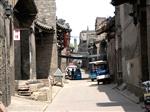
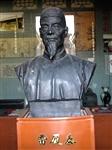
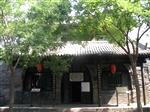
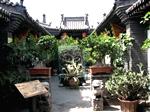
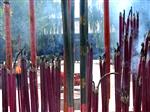
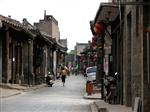
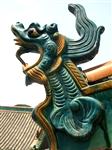
 Copyright © 1998-2025 All rights reserved.
Copyright © 1998-2025 All rights reserved.